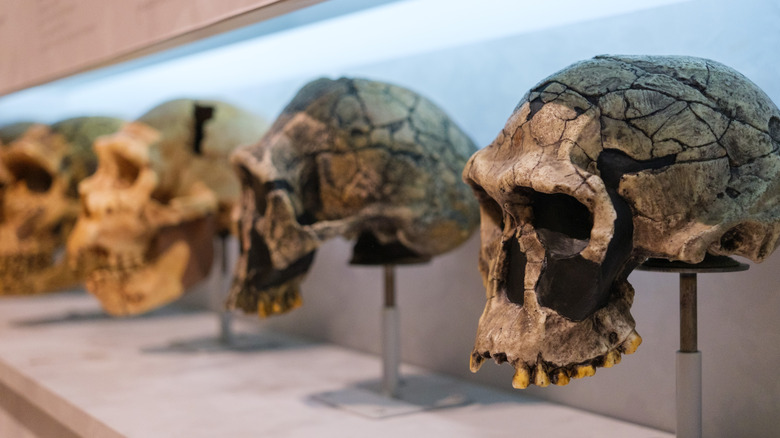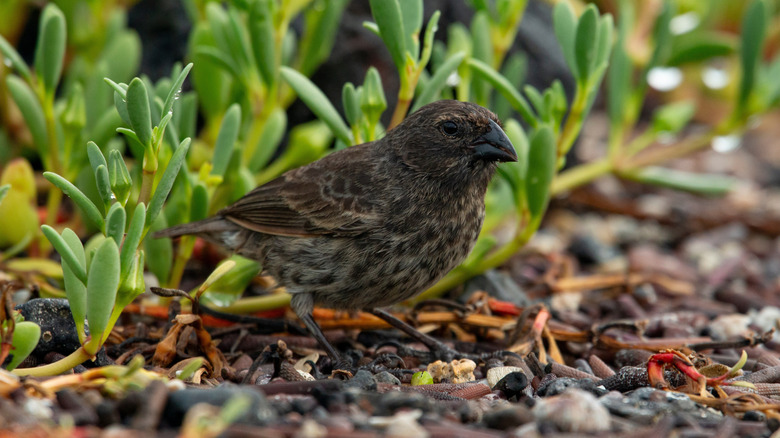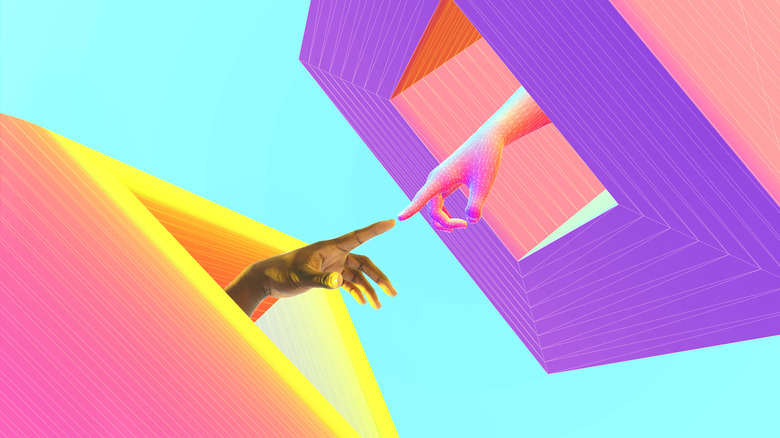Things People Get Wrong About Evolution
In 1858, English naturalists Charles Darwin and Alfred Russel Wallace independently reached the same groundbreaking conclusion — populations of living organisms change over time through natural selection. The two jointly presented a paper to the Linnean Society in London in August of that year titled "On the Tendency of Species to form Varieties; and on the Perpetuation of Varieties and Species by Natural Means of Selection." The paper marked the official beginning of the study of modern evolutionary biology, one of the best methods we have for explaining the history of life on Earth.
More than 160 years later, evolution remains one of the most revolutionary, misunderstood, and misrepresented scientific theories that exists. And while evolution doesn't require anyone to "believe" in it — it's a testable, observable, and well-supported scientific theory — the effects of getting the core principles of evolution right (or wrong) ripple outward to nearly every corner of human society.
It's easy to miss the mark — distilling a complex biological theory into everyday conversation, media headlines, or even a classroom lesson is always going to be a tall order. But understanding how evolution works helps us better understand ourselves as well as the world we live in, and looking at what it isn't can be just as useful as examining what it is. Here, we break down some of the most common things that people get wrong about the processes of evolution to clear the air.
Evolution doesn't make things better
A common misunderstanding about evolution is the idea that it always produces organisms that are smarter, stronger, faster, or even perfectly suited to their environment. It's easy to see how this thinking developed — modern humans carrying smartphones and traveling to space certainly feels like a pinnacle, but that is the danger of anthropocentric bias. This narrative misses what evolution is actually doing: shaping species to simply be good enough to survive the environments they inhabit.
The key dynamics powering evolution — things like natural selection and mutation — don't guarantee fully optimized results. Sometimes, they even result in organisms that are less well suited to their environments or that develop traits that have no impact on their survival whatsoever. Humans, for example, still carry plenty of genetic diseases, but our species is well enough adapted to the world around us to still be able to carry on our genes — even the harmful ones.
The point is that the idea of progress is not a concept that fits into the theory of evolution. The natural world changes, shifts, and yes, evolves, but any attempt to place a framework of "progress" on top of that system would be little more than an attempt to satisfy the human need to align things to a narrative that has no basis in reality.
Evolution isn't intentional
One of the most persistent myths about evolution is that it has intention. The basic idea behind this misconception is that organisms evolve "to do" something, as if a project planner on a job site identified an issue that needed fixing. This kind of framing is everywhere — frogs evolving bright colors to ward off predators or bats evolving echolocation to catch insects — making it sound as if there's a conscious force behind the curtain. Not only does that rhetoric do a disservice to already-plagued debates surrounding the idea of creationism, but it's also scientifically inaccurate.
In reality, evolution has no foresight, no goals, and no master plan. It's a process, not a decision. For example, in places in the United States where anti-lice shampoos are commonly used, you find a higher prevalence of chemical-resistant lice. It's possible that a random genetic mutation occurred to make some of the lice population more resistant to the shampoo, but scientists actually believe the more likely explanation is that the traits for resistance were already present in a portion of that population. This group became more prevalent because, over time, the chemicals in the shampoo killed off all members of the population that didn't exhibit that resistant trait.
As humans, we like to envision an intentional series of events: the shampoo "arrived" and the lice "reacted" by evolving a trait "to counter" its lethal chemicals. But that's simply not true. Instead, a particular environmental pressure winnowed out members of the population whose genetic makeup wasn't suited to survive under those conditions. Put another way, the sandy, rocky bottoms of riverbeds are capable of filtering water as it passes through to aquifers below ground — that doesn't mean the river consciously acted in this way to achieve the goal of cleaner water.
Evolution isn't always slow
Another common misconception about evolution is that it takes millennia to manifest in any meaningful way. While many evolutionary changes do unfold over long timescales, this isn't always the case. In fact, researchers have documented cases of measurable evolutionary shifts within just a handful of generations, especially when a species faces a sudden change in its environmental conditions.
A classic example of this involves the medium ground finches of the Galapagos Islands — the same birds that Charles Darwin observed while collecting evidence of evolution during his expedition there in 1835. These finches have beaks that are perfect for cracking open tiny seeds from the plants native to the island. But in 1977, a harsh drought devastated the plant population from which the birds were used to feeding. Larger seeds produced by other plants were available, but only birds with big enough beaks to break them open managed to survive. Over the course of just a few generations, researchers noticed a 4% increase in the average beak size of the finch — evolution had occurred right before their eyes.
Another study from 2008 documented the rapid change in a population of Italian wall lizards after they were introduced to Pod Mrčaru, an island off the coast of Croatia, in 1971. In under 40 years, researchers observed startling changes to the lizards' digestive systems and head sizes, the evolutionary result of the island's particular environmental pressures. The lizards were previously adapted to an insect-heavy diet. The island, however, was home to an abundance of plant species whose presence in the ecosystem led to the lizard developing cecal valves that enabled better processing of the high cellulose content of the stems and leaves that were now becoming a part of their diet.
Humans are still evolving
It's easy to think of evolution as something that happened in the distant past that resulted in a "final product" and then stopped. And the idea that technological progress somehow nullifies evolution in humans is a common one, but it's equally mistaken. In reality, evolution is an ongoing process, and Homo sapiens are still very much a part of it.
Somewhere between 6,000 and 10,000 years ago, in the region surrounding the Black Sea, a random genetic mutation in the OCA2 gene likely resulted in humans gaining a new eye color: blue. Scientists believe some blue-eyed individuals got their eye color from other genetic differences, but people with blue eyes that occur due to the change in the OCA2 gene can likely trace their lineage back to a single common ancestor. And while 10,000 years sounds like a long time, it's the blink of an eye on evolutionary scales.
Thick, black, straight hair is another recent genetic change in humans, dating back 30,000 years. That trait owes its existence to a mutation in the EDAR gene, which plays a role in the early development of hair, nails, teeth, and skin. Today, most human adults in the world can't digest lactose, the primary sugar in milk. But a random genetic mutation resulting in the ability to produce the enzyme needed to break lactose down emerged sometime around 7,000 years ago in some North African populations, quickly spreading into Europe. Today, some women in sub-Saharan Africa carry an altered version of the FLT1 gene, which means their children have a lower risk of contracting malaria while in utero. Our species is still very much evolving and will continue to change in unforeseen ways.




